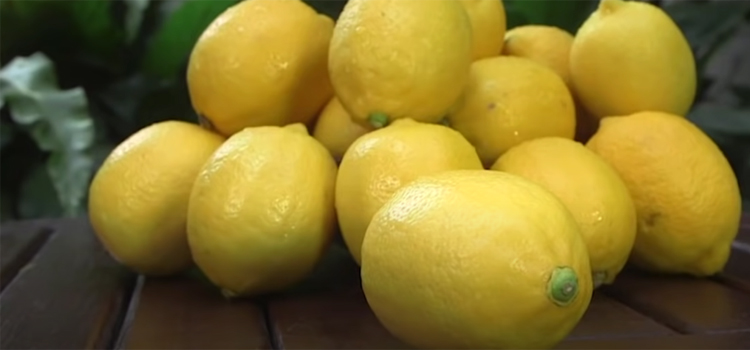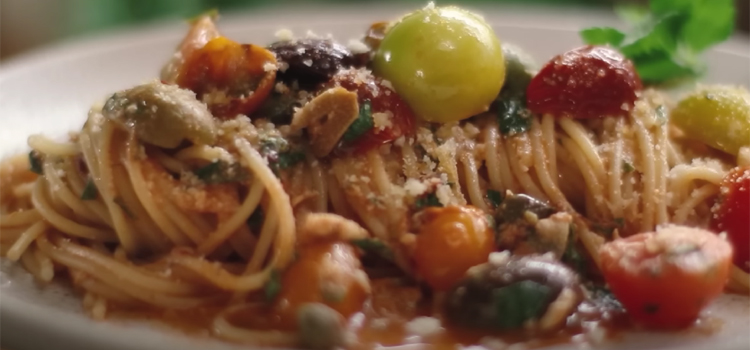Last Updated on September 14, 2024 by Shari Mason
Pasta makes a **yummy** addition to many meals! But getting the amount of salt in that boiling water just right is tricky. Add too much, and it’s **too salty to enjoy**.
Whether you’ve accidentally added too much salt or you’re trying to reduce your sodium intake, there are several ways on how to make pasta less salty without sacrificing flavor.
5 Ways To Make Pasta Less Salty
1. Use Acidic Ingredients


Using acidic ingredients like lemon juice or vinegar [2] can help balance the pasta’s saltiness. This is because the acid can counteract the effects of salt, creating a more balanced and flavorful dish.
“Bacon. Let’s talk about bacon. There’s no meat more glorious than bacon. You can add it to pasta instead of cheese. You can stick it in a sandwicher… instead of cheese.”
– Rob Manuel, Musical Artist
A straightforward way to incorporate acidic ingredients is to squeeze lemon juice or vinegar into the pasta sauce. This works incredibly well with tomato-based sauces, where the acidity of the tomatoes can help to balance the flavors further.
It’s essential to use the acidic ingredients in moderation, however, as adding too much can overpower the other flavors in the dish.
Be sure to taste the pasta as you go, adjusting the amount of acid and other ingredients until you achieve the perfect balance.
Read: Can You Use Buttermilk Instead Of Heavy Cream In Pasta?
2. Rinse The Pasta
Although it’s not recommended, a straightforward way to make pasta less salty is to rinse it with cold water after cooking. This helps to remove any excess salt that may have been absorbed during the cooking process.
Additionally, rinsing the pasta will cool it down, making it easier to handle and preventing overcooking.
To rinse your pasta, drain it in a colander and then run cold water over it until it cools down. Be sure to shake off any excess water before adding it to your sauce or mixing it with other ingredients.
Read: How Long Is Baked Ziti Good For In The Fridge?
3. Add Unsalted Pasta Water


Another effective way to make pasta less salty is to use unsalted pasta water to dilute the sauce. Before draining the cooked pasta, reserve a cup or so of the pasta water [1].
This water can then be added to the sauce, helping dilute the saltiness and adding some starch to thicken and bind the sauce. It’s important to use unsalted pasta water, as using salted water will only add to the saltiness of the dish.
Be sure to add the pasta water gradually, stirring the sauce as you go, until you reach the desired consistency and flavor.
This method can be especially effective in dishes like spaghetti or linguine, where the pasta is served with a simple sauce made from olive oil and garlic.
4. Add A Starch
Adding starch like flour or cornstarch to the pasta sauce can help to absorb excess salt and thicken the sauce. Mix the starch with cold water to create a slurry, then add it to the sauce.
Cook the sauce over low heat, constantly stirring, until it thickens to the desired consistency. This method can be especially effective in creamy pasta sauces, as the starch can help to create a smooth and velvety texture.
It’s essential to use the starch in moderation, as adding too much can result in a sauce that’s too thick or gummy.
Be sure to taste the sauce as you go, adjusting the amount of starch and other ingredients until you achieve the perfect balance of flavors and texture.
5. Add More Ingredients


Another way to make pasta less salty is to add more ingredients to dilute the saltiness. This can be done by adding more vegetables, cheese, or meat to the pasta dish.
These ingredients can absorb some salt and create a more balanced flavor. For example, adding steamed broccoli or sautéed mushrooms to a salty pasta dish can help dilute the saltiness while adding texture and flavor.
Similarly, adding a sprinkle of grated Parmesan cheese or crumbled feta can help to create a more complex flavor profile.
Be sure to add the ingredients in moderation, however, as adding too much can result in a dish that’s too heavy or overpowering.
FAQs
u003cstrongu003eHow to neutralize salt in food?u003c/strongu003e
Adding a neutralizing ingredient like sugar, acid (such as vinegar or lemon juice), or starch (such as potatoes or rice) can help to neutralize salt in food.
u003cstrongu003eHow to fix salty pasta salad?u003c/strongu003e
To fix a salty pasta salad, you can dilute the saltiness by adding more unsalted pasta or other ingredients, like vegetables, cheese, or meat, or by making a fresh batch of pasta without salt and mixing it with the salty pasta salad.
Final Thoughts
Making pasta less salty can be accomplished through various methods, from rinsing the pasta with cold water to adding unsalted pasta water or using acidic ingredients like lemon juice or vinegar.
Other options include adding starch like flour or cornstarch or diluting the saltiness by adding more ingredients like vegetables or cheese.
By experimenting with these different methods and finding the right balance of flavors, you can enjoy your favorite pasta dishes without the excess salt.
References:
- https://www.foodandwine.com/pasta-noodles/save-your-pasta-water
- https://www.sciencedirect.com/topics/food-science/vinegar
- Can You Put an AC Unit in the Kitchen? - September 27, 2024
- What Cheese Does Olive Garden Use? Discover Their Signature - September 27, 2024
- How to Cancel a Pizza Hut Order? Quick & Easy Guide - September 24, 2024


